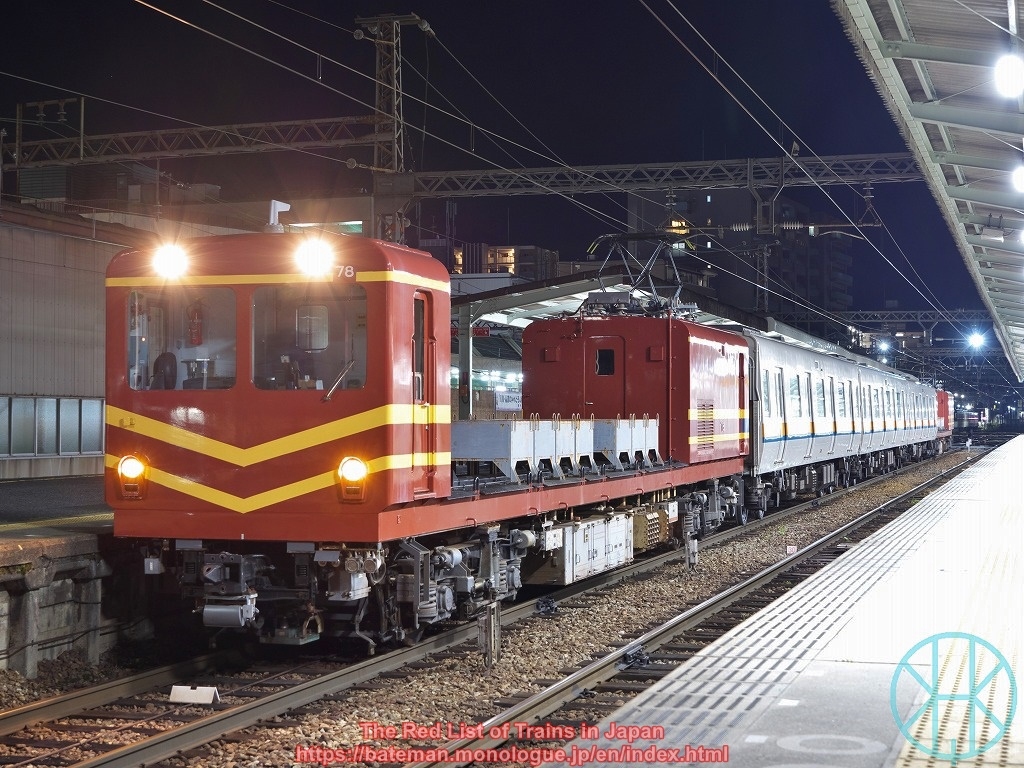Kintetsu MoTo 51 series

Data (as of 29 Nov 2025)
| Status: | Least Concern |
| Constructed in: | 1928 |
| Rebuilt in: | 1969 |
| Number rebuilt: | 4 |
| Registered: | 2 |
History
MoTo 51 series is now used for empty coaching stock movement transporting Keihanna Line trains, as they cannot run outside the Line by themselves due to a different electrification method. However, the history of the MoTo 51 series is complicated as described below.
The MoTo 51 series was dramatically rebuilt from Nara Electric Railway DeBaBo 1000 series. The DeBaBo 1000 series was built in 1928 when Nara Electric Railway opened. Nara Electric Railway was merged into Kintetsu in 1963 and the line became Kintetsu Kyoto Line. The DeBaBo 1000 series was renamed Mo 430 series by Kintetsu, and all carriages were withdrawn by 1969 when the line voltage was raised from 600V to 1,500 V.
However, some carriages survived. Five out of 24 carriages were converted to wagons, and four of them became the MoTo 51 series. The four carriages were rebuilt as if a brand new train, but had bogies and traction reused. According to the official documents, the series is registered as trains converted from Mo 430 series. The MoTo 51 series was designed as a train carrying rails, and ran when there was a track replacement work.
One of two two-car units was withdrawn in 1991, and the other was dramatically refurbished in 1998 as quasi-locomotive that transport Keihanna Line trains. By then, almost of all components dating back to 1928 have been lost. Since then, the MoTo 51 series has been used for the empty coaching stock movement when major maintenance or repair work of 7000 or 7200 series on Keihanna Line is carried out.
Kintetsu also has two more units for such empty coaching stock, called MoTo 90 series.
Current Operations & Future Prospects
The MoTo 51 series runs only when necessary as described above. 7000 or 7200 series train (formed of six coaches) is always divided to two three-car pairs and sandwiched between the MoTo 51s.
